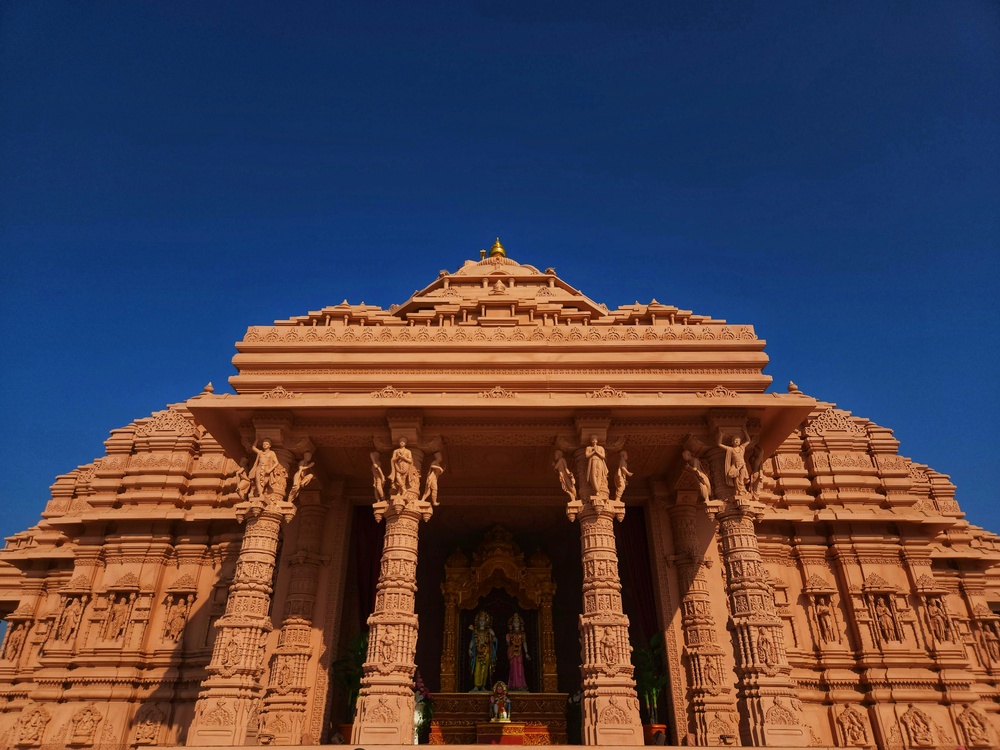Religious Tourism in India: A Sacred Journey Through the Land of Faith
India, a land of profound spirituality and cultural heritage, is one of the most significant destinations in the world for religious tourism. With its multitude of religions, ancient temples, spiritual festivals, and sacred cities, religious tourism in India offers a deeply enriching experience for seekers of peace, devotion, and cultural insight.
From the snow-covered shrines in the Himalayas to the serene temples in the South, every corner of India has a spiritual story to tell. Whether you’re a pilgrim looking for divine blessings or a traveler seeking the cultural pulse of the country, religious tourism in India is a journey like no other.
1. Understanding Religious Tourism in India
Religious tourism refers to travel undertaken for spiritual or religious purposes. It can include pilgrimages, visits to holy sites, attending religious festivals, or simply exploring the spiritual and architectural marvels of various faiths.
India is home to major world religions like Hinduism, Buddhism, Jainism, Sikhism, Islam, Christianity, and more. Each has left behind a rich legacy of religious monuments, rituals, and festivals that attract millions of domestic and international tourists annually.
2. Top Destinations for Religious Tourism in India
a. Varanasi (Uttar Pradesh)
Known as the spiritual capital of India, Varanasi is one of the oldest living cities in the world. Devotees flock here to take a holy dip in the Ganges, perform rituals, and witness the mesmerizing Ganga Aarti.
b. Vaishno Devi (Jammu & Kashmir)
A revered Hindu shrine nestled in the Trikuta Mountains, visited by over 1 crore pilgrims every year. The 13 km uphill trek to the shrine is as much a spiritual as it is a physical journey.
c. Tirupati Balaji (Andhra Pradesh)
Home to the Tirumala Venkateswara Temple, one of the richest and most visited temples globally. Devotees believe a visit here fulfills all wishes.
d. Golden Temple (Amritsar, Punjab)
The holiest site in Sikhism, also known as Harmandir Sahib, is known for its spiritual ambiance, divine music, and the world’s largest free community kitchen (Langar).
e. Bodh Gaya (Bihar)
The place where Lord Buddha attained enlightenment under the Bodhi Tree. A sacred pilgrimage for Buddhists around the globe.
f. Ajmer Sharif Dargah (Rajasthan)
The resting place of the Sufi saint Khwaja Moinuddin Chishti, this shrine attracts devotees from all religions seeking blessings and peace.
g. Rameswaram (Tamil Nadu)
Part of the Char Dham pilgrimage, Rameswaram is famous for the Ramanathaswamy Temple and its legendary link to Lord Rama.
h. Shirdi (Maharashtra)
Dedicated to the revered saint Sai Baba, Shirdi is a popular spiritual center drawing millions of devotees every year.
3. Major Pilgrimage Circuits in India
- Char Dham Yatra (Uttarakhand): Yamunotri, Gangotri, Kedarnath, and Badrinath – sacred temples in the Himalayas.
- Jyotirlinga Circuit: Covers 12 sacred Shiva temples across India.
- Buddhist Circuit: Lumbini (Nepal), Bodh Gaya, Sarnath, and Kushinagar – key sites in Lord Buddha’s life.
- South Indian Temple Trail: Includes Madurai, Rameswaram, Kanchipuram, and Thanjavur.
- Sufi Circuit: Spanning dargahs in Delhi, Ajmer, Fatehpur Sikri, and more.
4. Religious Festivals That Attract Tourists
India’s religious diversity is reflected in its festivals, many of which are significant tourist attractions:
- Kumbh Mela: The world’s largest religious gathering, held in Prayagraj, Haridwar, Ujjain, and Nashik in rotation.
- Diwali: The festival of lights, celebrated with grandeur across the country.
- Holi: The festival of colors, especially popular in Mathura and Vrindavan.
- Guru Nanak Jayanti: Celebrated in Gurudwaras with prayers and processions.
- Eid: Marked with festive gatherings in cities like Lucknow, Hyderabad, and Delhi.
- Christmas: Celebrated with midnight masses in Goa, Kerala, and Northeast India.
5. Growth of Religious Tourism in India
According to the Ministry of Tourism, religious tourism contributes significantly to domestic travel in India. With improved infrastructure, digital access to information, and government initiatives like PRASHAD (Pilgrimage Rejuvenation and Spiritual, Heritage Augmentation Drive), this sector is expanding rapidly.
Popular stats:
- Over 60% of domestic tourists in India travel for religious purposes.
- Religious tourism hubs like Varanasi, Tirupati, and Shirdi witness more than 20 million visitors annually.
6. Benefits of Religious Tourism
- Cultural Understanding: It fosters tolerance and appreciation of diverse beliefs and traditions.
- Economic Boost: Local communities benefit through increased employment and business opportunities.
- Infrastructure Development: Roads, sanitation, hotels, and amenities are improved in pilgrimage areas.
- Spiritual Growth: Provides inner peace, clarity, and personal transformation.
7. Tips for Religious Tourists in India
- Dress Modestly: Respect local customs and wear appropriate attire at religious sites.
- Be Mindful: Maintain silence and cleanliness in holy places.
- Check Schedules: Some temples have specific timings and entry rules.
- Respect Rituals: Avoid interfering in local customs and religious ceremonies.
- Stay Hydrated: Many pilgrimage spots require walking or trekking.
Conclusion
Religious tourism in India is more than a journey across places; it’s a voyage into the soul of a country steeped in timeless traditions and spiritual depth. Whether you seek divine blessings, architectural grandeur, or cultural insight, India’s spiritual landscape offers an experience that’s as awe-inspiring as it is enlightening.
In the end, the true essence of religious tourism lies not just in visiting temples, mosques, churches, or monasteries, but in finding meaning, peace, and a deeper connection to the world around you.


